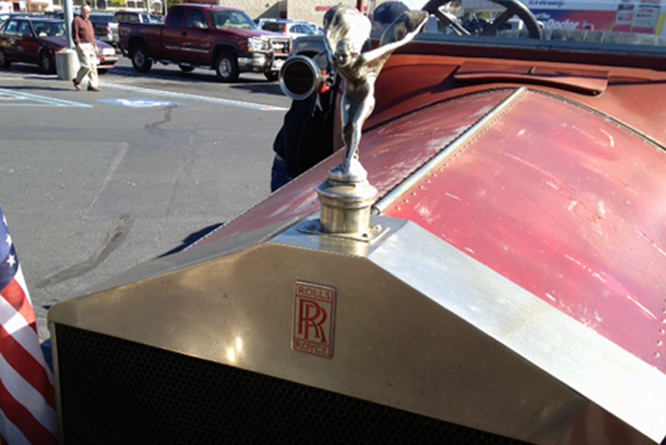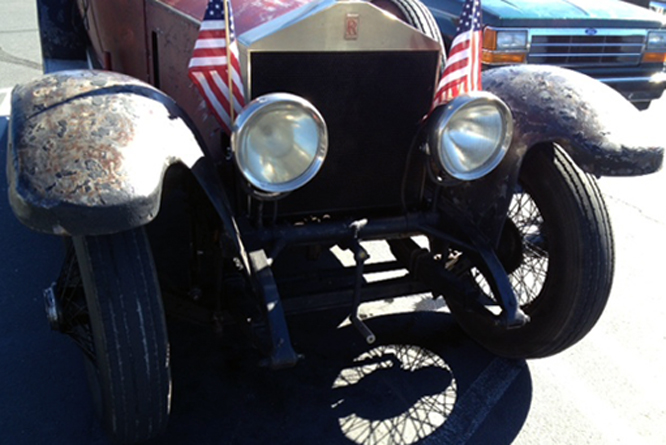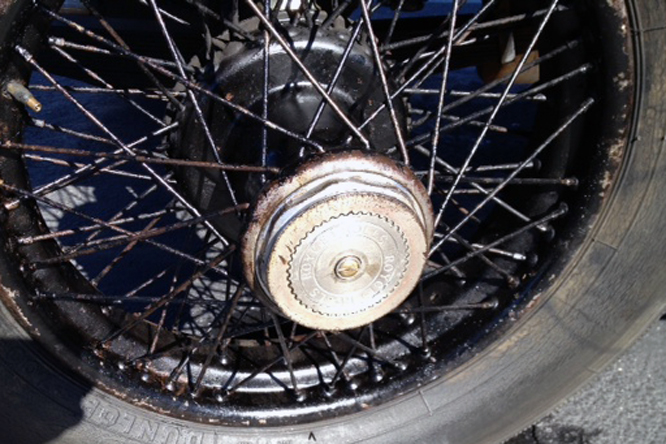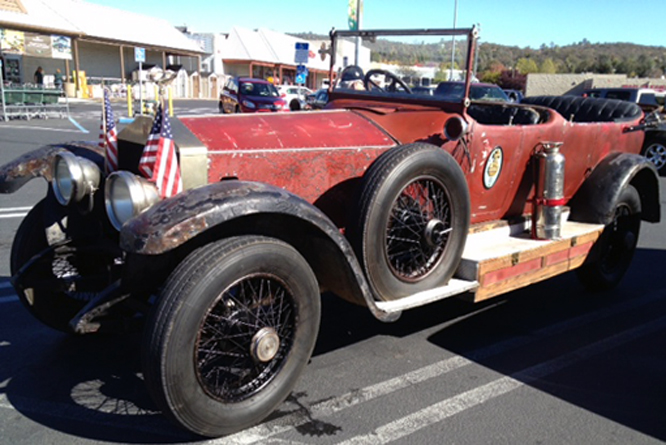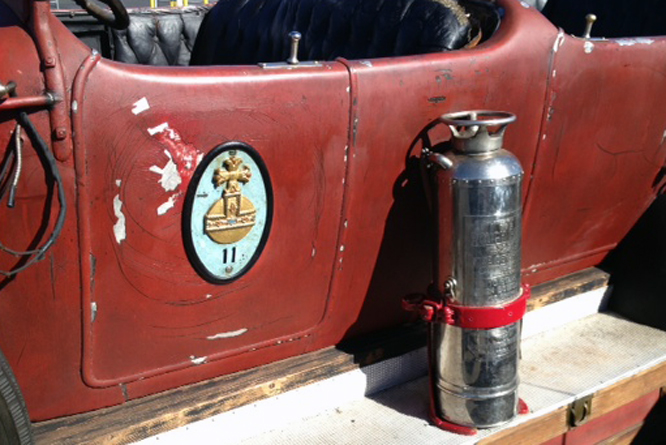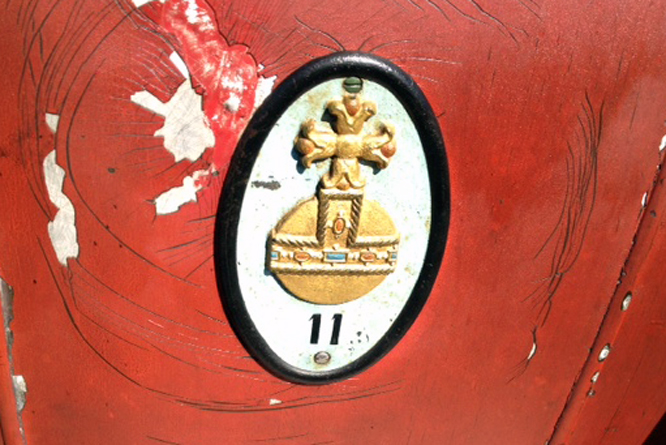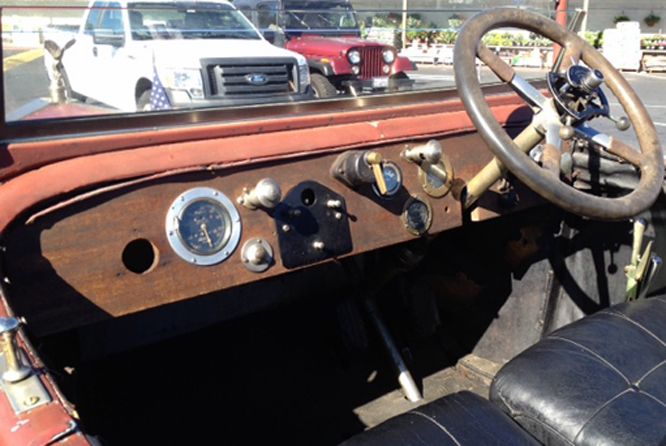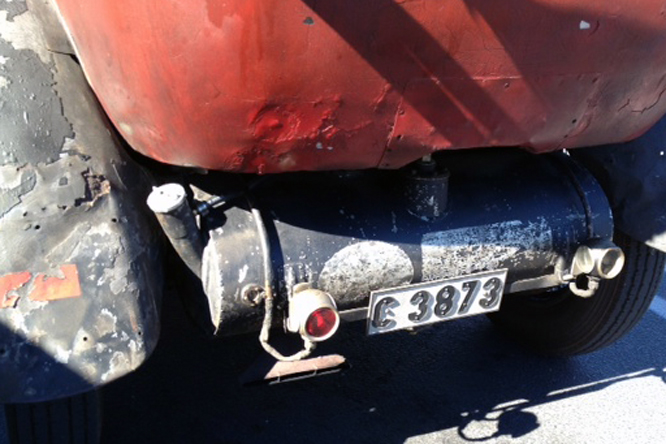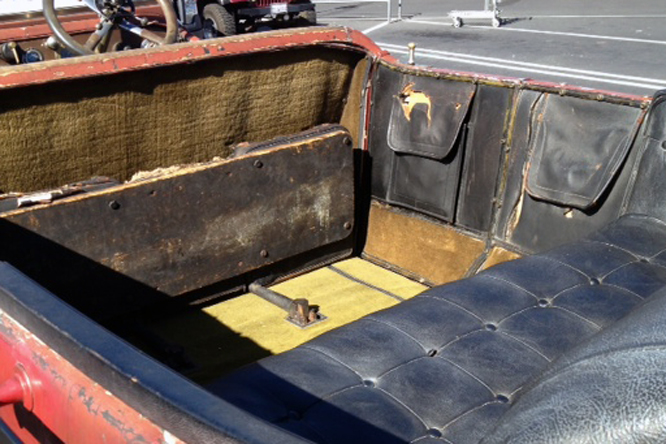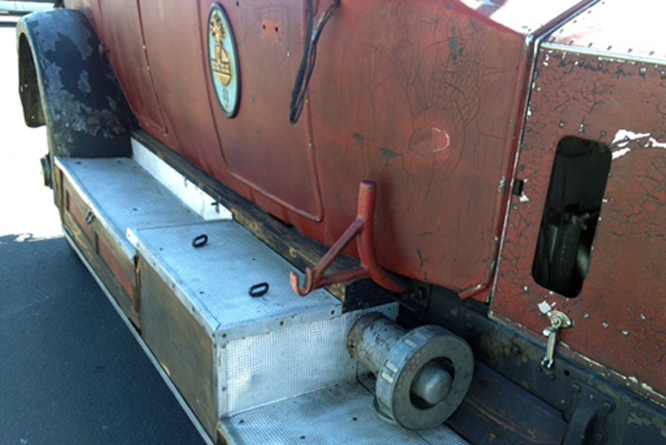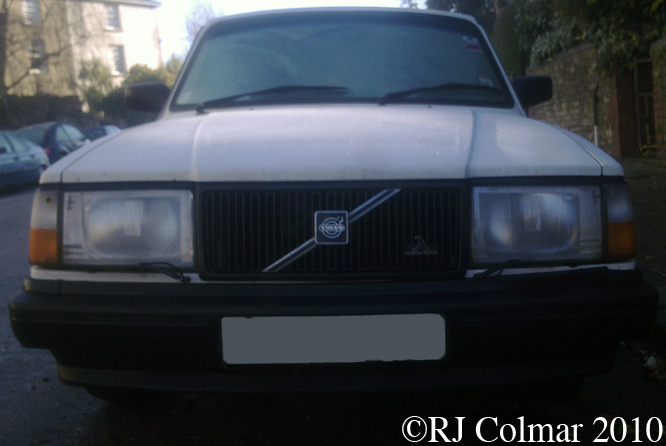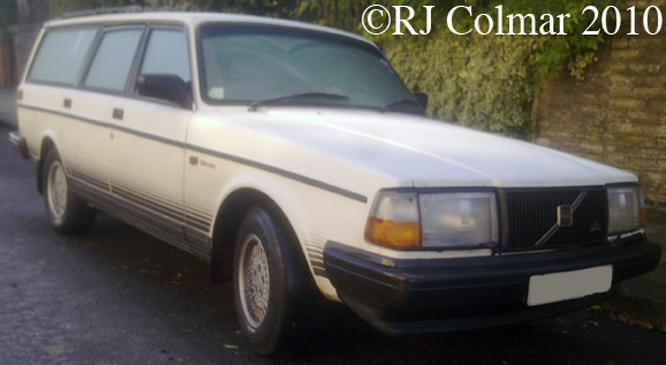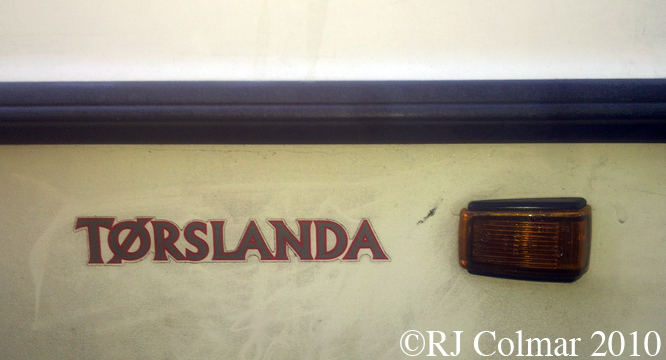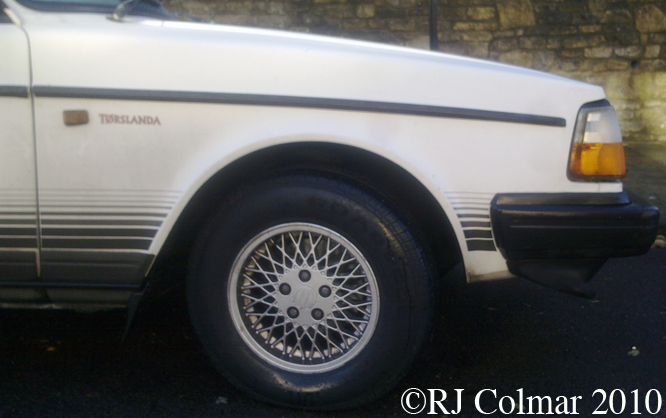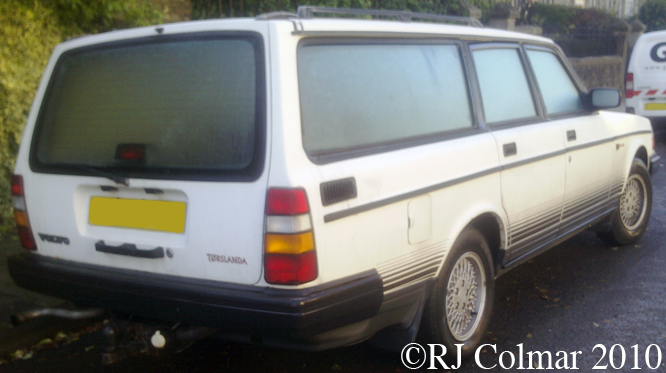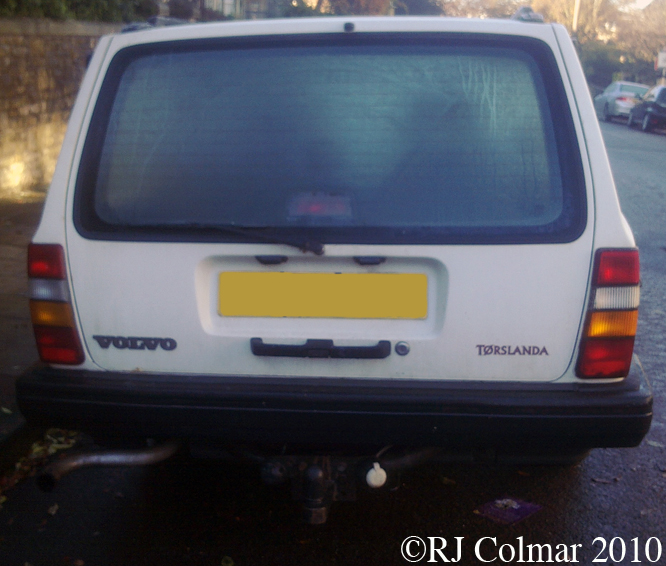Last in the present series of Sunday Rolls Royce blogs comes courtesy of photographs sent to me by Geoffrey Horton of a Rolls Royce 40/50 taken in a car park in California a couple of months ago.
Recognising the make was of course relatively easy, a big clue to the model was the absence of any front wheel brakes which did not become ‘optional’ until 1923.
Allan Lupton at The Nostalgia Forum found out that the car was almost certainly built at the Derby Factory in the UK because these RAF wheel hubs were only used on a few early Springfield, Massachusetts built 40/50’s in 1921.
Not withstanding the cars general red colour there are several clues that this car has seen service as a fire engine…
the fire extinguisher was a clue,
as was this insignia with what appears to be a fire station number on it.
Sebastian Tombs of The Nostalgia Forum recognised the dash as being close to the original which again dated the car as early 1920’s.
The biggest clue to the story of the car in it’s present condition lay in the rear number plate which Jonas at The Nostalgia Forum recognised as Swedish, the C denotes the car was registered in the Uppsala and Jonas found out the Rolls was registered there with the Uppsala Volunteer Fire Brigade on the 31st January 1935 having arrived in Stolkholm probably in 1934. Jonas then identified the insignia on the door as being that of Uppsala, the forth largest city in Sweden that lies 40 miles north of Stockholm.
Enquires with the local Authorities in Uppsala the Historic Fire Association in Sweden led me to Urbin Duhrin who kindly revealed documentation showing that the Rolls Royce was converted into a Fire Engine by Wattholma who’s proprietor was one ex Fire Captain F W Kylberg who left the Stolkholm Fire Service in 1918 after receiving an injury and started a business converting large imported vehicles into fire engines.
Christer Johanson back at The Nostalgia Forum then found an interesting legend relating to Fire Captain Kylberg and this Rolls Royce which as told by active Fire Chief Leif Lofgren translated from Swedish runs something like this, the Swedish Civil Fire defense was not very advanced in 1935 so in order to sell the converted Rolls Royce Fire Captain F W Kylberg allegedly organised some “targeted marketing” by waiting for the end of a meeting of Uppsala alderman which took place in a church. When the meeting showed signs of ending Kylberg lit a small straw fire and as the aldermen alighted from the building they were confronted by the fire and a short while later Kylberg emerged with his fire truck, which had been hidden nearby, to put out the fire, showing by example the usefulness of his fire truck and making a sale !
An example of how unsophisticated the Swedish Fire Defence services were as late as the 1950’s involves two more of Kylberg’s converted vehicles one a 1923 Cadillac the other a Chevrolet of “unknown vintage” after a fire drill at Nortrtälje the Chevrolet broke down and so had to be pushed bumper to bumper from behind back to base by the Cadillac to the rear of which was hitched the Chevrolet’s trailer mounted water pump.
Jonas Fröjd tells me that today’s featured Royce remained in service with the Uppsala Fire Brigade until April 24 1944 and was then transferred to the Voluntary Fire Brigade at Vattholma, the same town where Frederick Kylberg had converted the vehicle from a passenger car to a fire engine in 1935. The car remained registered with the brigade at Vattholma until March 12th 1964 when ownership changed to the Swedish Nobleman Per Henrik Gustav von Essen in Friherre who appears to have taken it off the road and off the official records.
Thanks again to Allan Lupton I believe this car was built in 1921 originally with a Hooper body, I have made enquiries with two Rolls Royce owners clubs to see if they can put me in touch with the current owner and find out what happened to the originally Hooper bodied 40/50 between 1921 and 1934. As and when this information comes to light I’ll post a follow up blog.
My thanks to Geoffrey Horton for sharing his photographs, to Lola 5000, Jonas Fröjd, Allan Lupton, Vitesse2, Kayemod, Sebastian Tombs, Duncan Rollo, Tim Murray, David Birchall, Michael Ferner, LittleChris, 275 GTB-4, David McKinney, Micheal Hickey, Bloggsworth, MikeC, and Crister Johanson who all chipped in at The Nostalgia Forum, to Tobias Assiego Archivist at Uppsala kommun and Chief Fire Engineer Mats Sundelius at Uppsala Fire Defence who put me in touch with Urban Duhrin of www.brandhistoriska.se.
Apologies if some of the Swedish spelling is out, all corrections gladly accepted.
Thanks for joining me on this “Get The Fire Brigade !” edition of “Gettin’ a li’l psycho on tyres”, I hope you will join me again tomorrow for a 1000 mph ride into the future world land speed record book. Don’t forget to come back now !

